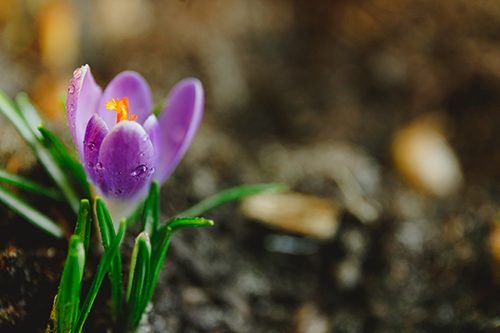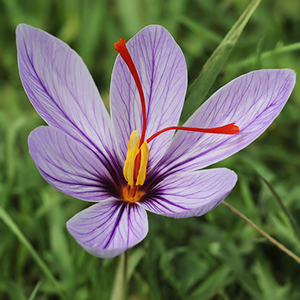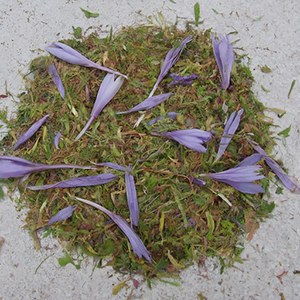Contents
The meadow saffron is an attractive flower with a completely innocent appearance. However, it contains a potent poison, which may have positive effects only under medical supervision.

Meadow Saffron Scientific Facts
- Scientific name: Colchicum autumnale L.
- Other names: Autumn crocus.
- French: Colchique (d’automne), safran faux.
- Spanish: Cólquico común, de otoño, vellorita, azafrán silvestre.
- Environment: Not a widespread plant, it grows in humid and mountainous regions all over Europe. In America and Canada, it is grown for pharmaceutical industries.
- Description: This vigorous plant of the Liliaceae family grows from 10 to 40 cm high. Its pink or purple flowers resemble saffron ones. The leaves are large and lanceolate, and the bulbs are chestnut-like.
- Parts of the plant used medicinally: The bulbs and the seeds.
Meadow Saffron Healing Properties

The whole plant contains colchicine, an active alkaloid with potent anti-inflammatory and analgesic effects in therapeutic doses. It also has diuretic powers. Its most important use is to treat gout crisis, which is practically indispensable because of its quick and energetic effects. Pain from a gout crisis, usually on the toes, is spectacularly eased.

Colchicine acts on cellular nuclei, stopping and preventing cellular division, known in biological science as mitosis. This is why this alkaloid has been tested in cancer treatment, though its toxic effects on the human body are too intense to allow its therapeutic use. Research is being conducted on some of the chemical compounds of colchicine that humans better tolerate.
Warning
It is a highly poisonous plant. Just two of its flowers can cause a child to die.
How to use Meadow Saffron
- Pharmaceutical preparations—These are the most recommended ways to use meadow saffron’s active component. It is presented in the form of colchicine pills, and the dose ranges from 0.5 to two daily mg.
DISCLAIMER: All content on this website is presented solely for educational and informational objectives. Do not rely on the information provided as a replacement for advice, diagnosis, or treatment from a qualified medical expert. If you are pregnant, nursing, or have any preexisting medical concerns, talk to your doctor before using any herbal or natural medicines.
REFERENCES
- George D. Pamplona-Roger, M.D. “Encyclopedia of Medicinal Plants.” George D. Pamplona-Roger, M.D. Encyclopedia of Medicinal Plants. Ed. Francesc X. Gelabert. vols. 2 San Fernando de Henares: Editorial Safeliz, 2000. 666. Print.
- https://www.drugs.com/drug-interactions/colchicine.html
